5:11 p.m. PDT Sept. 3, 2021
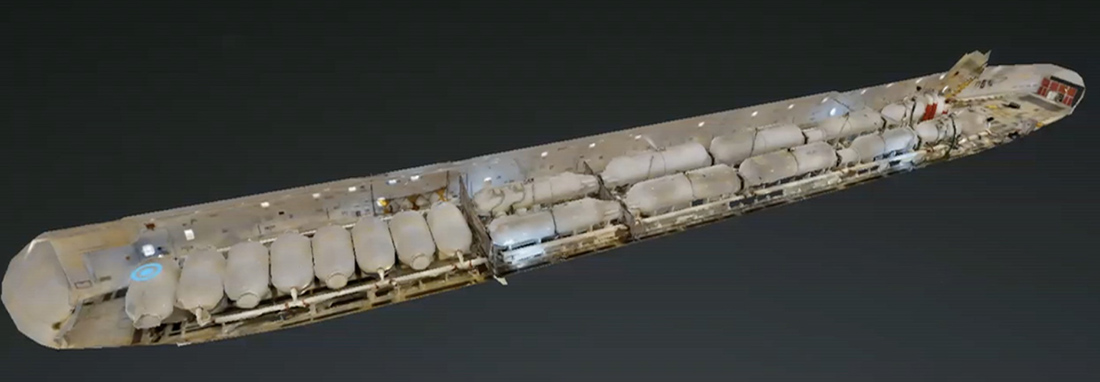
A company that provides aircraft for lease has purchased the retardant delivery system (RDS) formerly in the 747 Supertanker. Logistic Air is now the owner of the tanking system that for years had interim approval by the federal government’s Interagency Airtanker Board (IAB) to be used in an air tanker.
Global Supertanker’s recently modified website proudly proclaims “Returning to Service in 2022.”
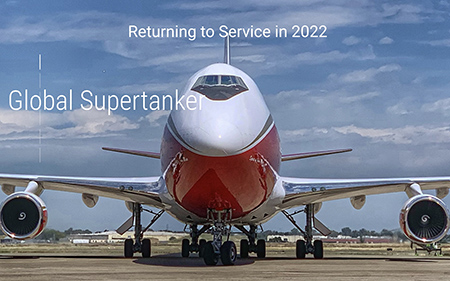
Many of the photos of aircraft on Logistic Air’s website are 747s, but they provide wide-body and narrow-body passenger and cargo aircraft for world-wide operations.

The SuperTanker’s RDS is comprised of approximately 20 tanks that hold retardant and enough compressed air to pump the retardant out of the four nozzles that were in the belly of the huge aircraft. At various times the air tanker had interim certification by the IAB to carry 20,000, 19,200 and 17,500 gallons of retardant. The IAB and the US Forest Service appeared to bend over backwards to find reasons to not issue full approval to the aircraft and the RDS.
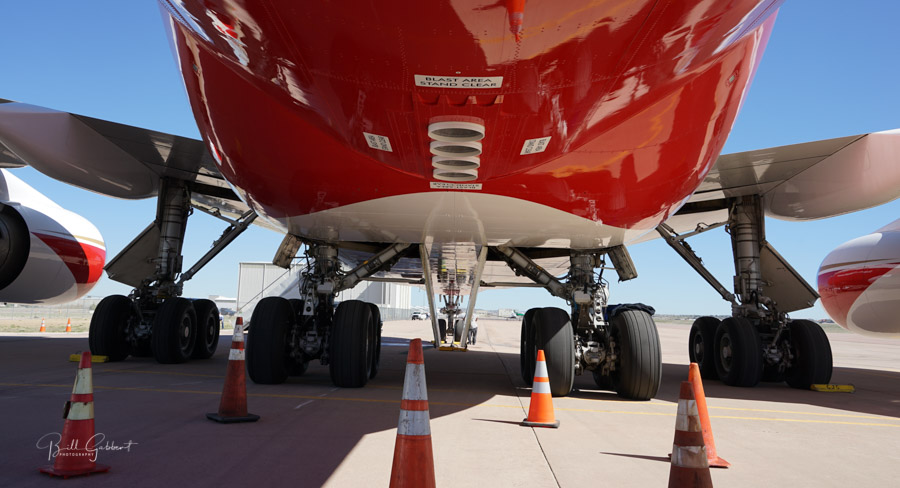
Earlier this year the SuperTanker’s drop controlling system and other components were significantly modified to improve the delivery of retardant, including metering the volume dispersed based on the ground speed of the aircraft. It then went through dozens of tests on the ground. The operators were waiting for it to be scheduled for the IAB’s grid or cup test which measures the amount of retardant that hits the ground over a large grid. But before that took place, the owner, Alterna Capital, shut down the company and sold the aircraft and the RDS to two companies. The 747 was purchased by National Airlines to be used as a freighter, and Logistic Air bought the RDS.
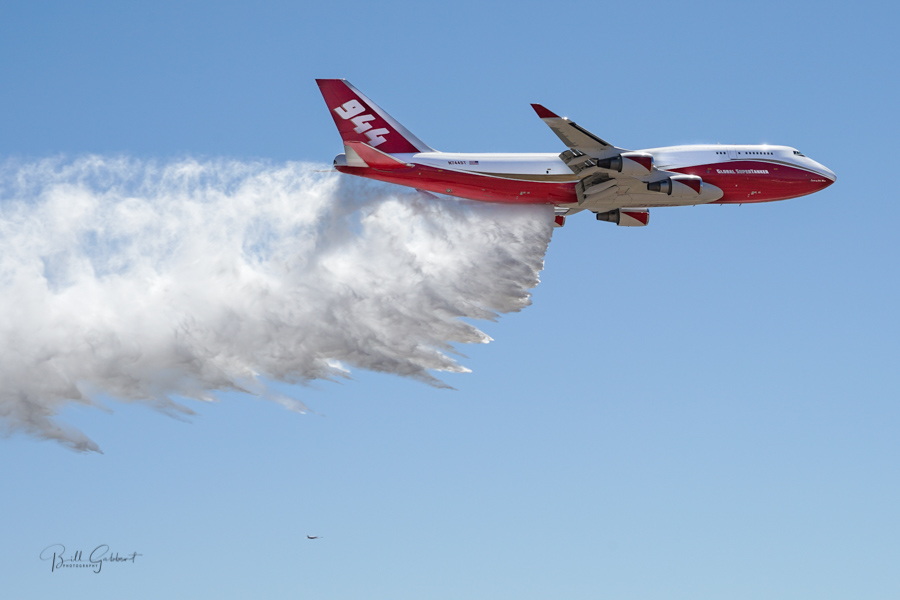
A person at Alterna Capital who was not authorized to speak for the company told Fire Aviation that Global Supertanker had approximately two dozen employees and contractors when the doors closed and none of them are working for the new owners at this time. The person said Alterna “will support Logistic Air in any way we can.”
Calls to Logistic Air were not immediately returned.
UPDATE at 6:27 p.m. PDT Sept. 3, 2021
After this was published we received a call from a person at Logistic Air who asked to remain anonymous. They confirmed that the company plans to install the RDS in a nose-loading 747-200 when the aircraft completes maintenance after the first of the year. The aircraft itself will have to be modified, of course, to enable loading retardant and compressed air, and the plumbing and belly nozzles need to be installed. Then they will schedule a grid test, which they are confident it will pass. The final and most important step is applying for and receiving a new contract from the US Forest Service, no easy feat. We were told that some of the former employees of GlobalSupertanker are expected to work with the new organization.
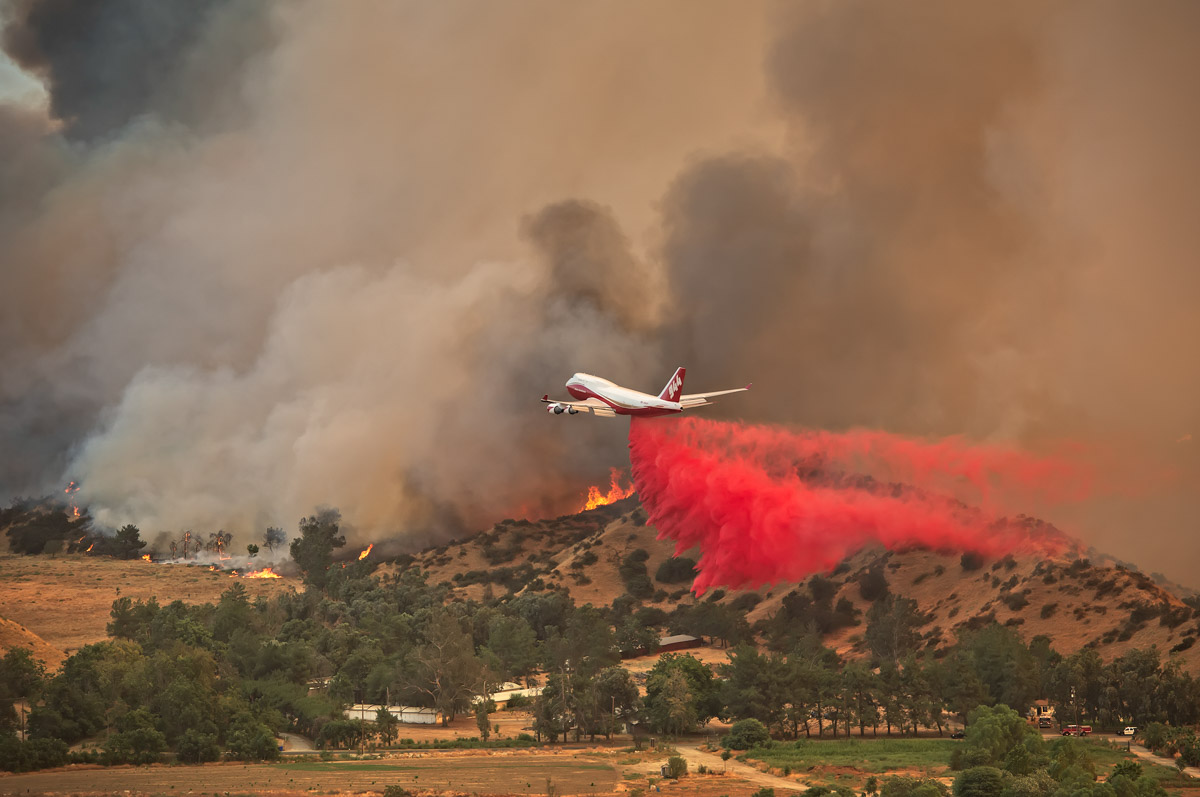
Thanks and a tip of the hat go out to Rick.

This all sounds really good but my question is: is it in service NOW?
Not yet!
Los Angeles Fire Dept. is spending up to $21 million on the lease and operation of two Canadair CL-415 “Super Scoopers,” leased from Canada for a 60 day fire season. If we had unlimited number of lakes in Southern and Central California, which we don’t, they would perhaps drop 1/10th. of the water (scooped from those non-existing lakes) or retardant, a 747 Supertanker can deliver at a pass. California can purchase and OWN a fleet of (2) 747-200 Nose Loaders and modify them for half of the cost of CL-415 lease, for year-round services. The 742 is slower than 744 and better suited for the “Cup Test.” In off season, they could be used for “cloud seeding” and help out our state in desparate need for water and rain. With the extreme droughts in the west and long fire seasons, we have to stop making excuses and do somethin!
I worked Stockton air attack base in the 90s, we loaded P3’s C-130s DC4 and DC6.
What the USDA need is private contractors like Coulson who can afford good safe reliable aircraft. There are so many C-130s parked doing nothing. Set up strategic bases thru out the country. We are wasting resources available to us from military aircraft that are sitting parked in AZ. People like Mark Cuban an others should invest in C130’S, modular systems are available or can be designed for an effective drop of retardant with a good rate of spread. I’ve been in the aviation industry for 45 years, worked with some great mud droppers.
Private contractors backed by private equity companies require high returns on their investments. That’s why the 747 was taken out of service.
It looks large but can it deliver on target like helicopters and smaller aircraft?
At what altitude?
Example situations like Caldor with steep terrain canyons and mountain peaks?
Thanks
Large air tankers are usually lead into the drop by a lead plane (ASM). The lead and tanker are in constant communication from the time the lead and the tanker meet up, may as far as five air mile from the drop. At this point the planes are “paired-up.” Airspeed management is a big challenge as they approach the drop which the lead has already established, by someone on the ground or the ATGA orbiting above, usually the latter. Its now follow the lead plane as closely as possible without scaring each other. The lead is at the correct altitude for the drop, no lower than 150 feet above the terrain. Still in constant communications, ie. little rough in here, after the drop turn right etc. The lead will disperse a smoke trail on the exact spot to start the drop. If your on the flight deck of the tanker as soon as the nose hits the smoke, release the load. No high tech here but very accurate. ATGS, Air Tactical Group Supervisor.
Thanks for the info.
I found an article from 2020 about The Spirit of John Muir history and deployment in a number of fires since certification in 2016. The tail number 944 matches too.
I wonder why the new grid test?
“Like” the Caldor fire. I watched along hwy 88 just up the road from Silver Lake as that very thing you described was going on. A lead plane and a DC-10 making runs to the drop spot just over a ridge trying to keep the fire from making it to Hwy 88. Actually 2 DC-10’s and lead planes pulling them along. This was only days ago, 30 minutes later hwy 88 was closed and still is, the fire was making a big run in that area that day. From what i could see of the terrain, say a few 747’s could have possibly made a run at the ridge, and dropped a lot more retardant on it. Super scoopers tonight were skimming Lake Tahoe for water picks ups, 2 of them. 5 minutes round trip time following each other closely. I am waiting to hear tomorrows report and see how effective they were at dropping 1600 gallons each per run every 5 minutes. Clearly, we need to have some big changes in forest management, and fire fighting tactics. Why not use a 747, or any other big plane at their disposal any chance you get?
They also have something like the OV-10 electronically mapping out the entire area ahead of time and during the drops.
While a nose load 747F is great I am concerned about it being a 747-200….a far older airframe and wing design along with lower rated engines.
Here I go “hogging-up” the Professor web site. Tanker 944 is a 747-446. Powerplants produce 63,000 pounds of thrust. Built in 1991. First drop was in Israel in 2016, operated by Evergreen Aviation. This could be the 200 you are referring to. Different airplane and operator. Today Tanker 944 operates on fire missions with a tactical weight of over 200,000 pounds BELOW the F.A.A. gross certified weight. I understand this is the same weight margin for the DC 10s, 200,000 pounds below gross?
From my limited aviation knowledge, in which I accept corrections, it’s not always runway length but instead taxi/ turnaround space. In my other opinion… You could have a blimp that could create rain, but it does no good if the visibility doesn’t allow it to fly. Air resources are effective with ground support, ground resources can be more effective with air support.
The Forest Service Leadership and USDA has no one who understands or supports firefighting, air tankers and large helicopters. Been that way for years. Nothing will change until massive reform happens. Sad but true.
The Forest Service is politically driven. No one once to ruffle the feathers in congress, unless the constituents (public) demand a change. Example of past practices; heavy list helicopters (type I). Not adopted until L.A. County Fire and the Forest Service decided to try this concept of “logging helicopters, with buckets (tanked) to deliver 2000 gallons of water on a fire, a guaranteed contract, based in Van Nuys. CDF was involved on the same path in central California at the time. The Martin Mars, CDF had an opportunity to contract one of these 6000 water scoopers. Flown down from Canada, CDF took care of carding aircraft and crew. Its first fire season in California the Mars flew from one end of the State to the other, flying over 100 hours on fire missions. Forest Service didn’t want anything to do with this monster. Twenty years ago (time flies) a company, 10 Air Carrier had a crazy idea to convert a DC 10 into an air tanker. Again the Forest Service with the help of NASA determined that it could only be used on flat or rolling hill terrain fires, in a length report. CDF pilots and management, several where Captains on DC 10’s at one time in their careers said “why not”? Same story a different year, 747 as an air tanker? Three fire season with CDF (CalFire) and other internationally contracts, something must be performing as expected?
Just before I retired there was a USFS fire on the USFS/YNP border. YNP was going nuts wanting the FS to stop “fooling” around and get the thing contained/controlled before the upcoming Labor Day weekend. Phone calls were made from those much higher up the food chain and low-and-behold, the FS brought in a DC-10 on the fire which if I remember correctly, wasn’t even on a CWN contract. The DC-10 was on a CWN contract with Cal Fire. The USFS did some kind of a quick beg, barrow, steal agreement with Cal Fire to get it for a day to make the drops. I can say I would have loved to have seen the bill for that. Anyway, I believe it was four drops and the problem was solved. YNP overhead was happy and the citizens were happy that their Labor Day weekend wasn’t cancelled. Not many folks had seen a VLAT in operation at that time and the guys I talked to afterward who were on the line when that big thing came in all dirtied up and making that first drop all said it was amazing watching it do it’s thing.
Does anyone know why the Forest Service is so opposed to the supertanker?
It seems to me that we don’t need one supertanker. We need a fleet of perhaps 12. The previous supertanker could drop 19,200 gallons in a mile. Imagine having 4 sets of 3 planes dropping along a 4-mile front. One plane drops just behind the fire line, one on the fire line, and one ahead of the fire line.
We need bigger solutions for these mega-fires.
It’s not the Forest Service’ job to help the General Public.
Or even to Do What’s Logical.
The reasons have been written about here many times. I think the biggest thing comes down to paying a lot of money for a tool that is not very flexible. It is useful in specific situations, gentler terrain, better weather. Whereas multiple smaller planes are more versatile with faster turn around times. So it’s not all about $ per gallon dropped (747 is cheap by that measure). It is also gallons dropped per day, and targeted drops per day.
You can lookup the costs. At the risk of these being fuzzy on the numbers based on memory of those articles, I seem to recall they could operate 2 or 3 DC10s for the cost of one 747.
Regardless, CA desperately needs more LATS and VLATS regardless of whether those are dc10s or 747s.
The problem with the cost of operation is that the plane and the foam system it carries are purchased and operated by investment firms that require a high return. CalFire then contracts with them and uses the plane sparingly because it is so expensive. Which means they have to be even more expensive to meet their investors expectations.
Investment companies don’t care if the state burns so long as they make their profit.
With travel time from one end of the State to the other the two current established airports (retardant bases) at McClellan and San Bernardino provide good coverage for the 747. Castle has been approached before. The authority operating the Castle Airport has not been over zealous about operating tankers from their facility. Willows has runway and taxi weight limitations. Runway length is about one half the length to be in balance during a rejected take off. All comments are very good, people thinking.
During the 2017 fires, in Sonoma and Mendocino Counties, California, I believe the Super Tankers were utilized and with much success. Also, if I’m not mistaken, they were unitized in 2018 in the Carr Fire in Shasta County and had noticeable success. They may have their limitations in some applications, but I have not seen it thus far. Perhaps, cost of operation and runway capability could be a potential challenge.
If Super Tanker “success” is losing 1,600 structures in the Carr Fire, what’s failure look like?
Air tankers didn’t lose any thing. The Carr Fire consumed 1600 structures. All the kings men and all the kings horses… forgot the rest? Mother Nature was in control again. “win a lot (quick containment) lose a few” escape into the second burning period. Five decades of this business I understand the frustration.
Majority of those homes were lost in one day during an extreme wind event (Diablo Winds), that was the evening there was the massive fire tornado that ripped through the town. The footage of that thing was scary as hell. I don’t believe any tankers or helicopters were allowed to fly during that time.
It is not as maneuverable as the smaller planes in certain terrain, especially where there are frequent elevation changes, you take that and add a lack of knowledge of the area by the pilots and you get what happened on August 13, 2018 during the Mendocino Complex Fire. The supertanker had just come into service working the Ranch Fire part of the Complex Fire and was flying in the mountains because the fire had shifted from burning west to burning north and was making a run towards Lake Pillsbury. Ground crews had called for a more precision drop and wanted the retardant dropped hugging the dozer line. It watched the spotter plane do a test run then came in for the drop. The pilots did not notice a change in elevation due to the heavy vegetation and made part the drop below the required 200 feet. It sheered off part of an 89 foot Douglas Fir and a 60 section of the tree fell and injured 3 firefighters and it completely uprooted an 87 foot Douglas Fir that fell on Draper City Utah Battalion Chief Matthew Burchett crushing him to death. There were smaller tankers in the area that should of been used for that kind of drop. A 747 should be used for drops in a more open area where you can lay down a long retardant line, it should not be used to “snug up” the next drop closer to the dozer line. The strike team from Utah helped to save my town and my house the weekend they expected the Ranch Fire to come over Hogback Ridge and into the town of Nice. But they made sure it didn’t. I hate we could not send them all home safe to their families.
Why not put a N California Central Valley base location near Willows ,Ca. to accommodate the 747/ DC10 size aircraft for these firefighting wars.
Extend the runway to accommodate the required space needed for takeoffs and landings.
Last 10 years the north area has been plagued by fires.
Having a central base that could be used in both the coast range and northern Sierra and cascade ranges would be beneficial.
Willows is where Doolittle trained B-25 Mitchell pilots / heroes before embarking on the Tokyo bombing run from carriers in the pacific.
Let’s eliminate the fire threat with more air support to combat this menace that is becoming more n more prevalent.
Sitting on our hands isn’t going to work. Lives and property would be saved also.
Never thought of Willows Eric. That would be a very good location for a base. Not sure if the runway is long enough or heavy enough for the 747, and/or the DC-10’s. If it is they could move in a portable mix/load unit like they did at Castle when flying the DC-10’s out of there.
One additional problem the 747 would face at Willows besides the weight limitation/runway length is the staging of necessary equipment to re-pressurize the the compressed air tanks. I’m guessing that equipment costs a small fortune.
It cost $250,000 a day to use the Global Supertanker.
Willows is an excellent location ! Good suggestion. Yes, we need to act. I live in Shasta County and the last few years have been downright scary. Sitting on our hands is not the solution. We need good leadership in order to give our firefighters a fair chance to overcome these huge fires – forest management, with fires breaks and Super Tankers are a good starting point.
Isn’t McClelland a better choice?
Is this actually a valuable tool? Have there been reports showing its effectiveness on fires, or do we just have it for news cameras?
Often people are begging for the 747, using its absence as proof that the federal government is incompetent.
I’m not convinced.
You’d be convinced if your house was saved by that 747. I was a personal witness to this last year when Mount Toro, halfway between Salinas and Monterey California was burning along with Toro Park and Carmel Valley. Many many homes and structures were saved by that wonderful plane. Hope you never have to be standing outside praying that your house is saved by that piece of machinery and the men who fly them and keep them going. You would be convinced then.
My house was saved by the crew that was injured and the Battalion Chief that was killed because of a botched drop by the Global Supertanker. During the Mendocino Complex Fire it was flying in the mountains between Upper Lake and Lake Pillsbury and the pilots did not notice the change in terrain. It dropped retardant at about 100 feet instead of the required 200 feet. It uprooted an 85 foot Douglas Fir that crushed Draper City Utah Battalion Chief Matthew Burchett, and it also sheered off part of an 87 foot Douglas Fir that injured 3 more firefighters. There is an aerial photo of the accident site and you can see the two downed trees and where the force of the drop damaged an entire strip at the top of the mountain. I’m guessing the only reason why the Supertanker didn’t crash also was because as it dropped more retardant the plane got lighter and they could increase altitude quicker. Matthew Burchett’s widow filed a wrongful death lawsuit against the owners of the supertanker. A 747 has it’s limits, especially in the terrain we have in Lake County. It shouldn’t be used for a precision drop like it was that day. I was listening to the scanner when the accident happened, it was heartbreaking. I will always be grateful for the service and heartbroken for the sacrifice the Utah Strike Team gave to my town and my county in August 2018.
Hi Liz,
Here’s a more complete description of the events. Honestly, it doesn’t read like an indictment of the 747 or its crew.
kutv.com/news/local/utah-firefighter-matthew-burchetts-death-caused-by-retardant-drop-from-747
The Martin Mars was never fully “carded” by the US Forest Service, either. In 2008, the US Forest Service gave CDF/CalFire the money to contract the Martin Mars, and since the US Forest Service recognizes (“approves”) any aircraft carded by CDF/CalFire, the Martin Mars was then OK to use on USFS lands. More than one way to skin a cat!
The 747 will once again be a tool in the aviation toolbox. It’s not going to take the place of the DC-10’s, C-130’s, or S2-T’s. It’s going to be available for very long drops in terrain that it can safely get into. Two bases in California can currently support the 747. I’m thinking that someone will now be searching for another base or two to give better statewide coverage. One potential base would be the former Castle Air Force Base in California’s Central Valley at Atwater. Castle has been used in the past for VLAT’s with portable mixing, loading, and storage facilities. It also has a runway that handled B-52 bombers, and KC-135 tankers. With Fresno Air Base also being a busy muni airport, Castle would be well suited for the 747, DC-10’s, and C-130’s. it would also be a good reload base for S2-T’s flying from Columbia, Hollister, and Porterville.
I sure hope that the governor of California and people in his office read what you posted – all very good suggestions ! Thank you, !!
whats at Castle now. I lived down the street from there,
Thanks,
Another old captain
heck, you could base c-130’s or other large air tankers on a “ready alert” using the old christmas tree scramble pad. having multiple Large air tankers in the air within a few minutes. you also have a ton of ramp space that we know can accommodate VLATs.
I understand that a behemoth like a 747 isn’t for every job & might not deliver in a day’s time much more than the DC 10! But on the other hand NO TRI motor can lay a line of fire retardant like the queen ? of the sky’s!!
I love going to our air tanker base to watch.
Can the 747 take off and land at all the bases?
Unfortunately no, not all the forestry air bases can handle the 747 at least here in California. It needs a very long runway as well as space for turning as well as sitting
Between now and the next fire season, we need to extend the runways of the forestry air bases that can be strategic to fire fighting efforts so that the 747 can be deployed from those bases. Good leadership can make this happen. Sadly we lack that right now in our governor’s office. He just keeps blaming climate change. Time for a change in our leaders and our present lazy officials.
Sad is comments like this blaming local airport runway distances on any Governor. Do you have any idea how complex, expensive, and time consuming your simple bumper sticker solution would be. There are many cable strategically located airports already in the western states.
+1 on what Ken wrote. The naivety here on this site of all places is shocking.
This plane needs special ground equipment, extending all fire base runways to accommodate this one plane would be pointless unless all those bases were also outfitted with ground equipment to accommodate this one unique plane.
Now, it would be great if there were 2 or 3 of these in operation. Multiple planes has the potential to reduce the operational costs a little, which is one of the FSs biggest issues with this plane.
However, even if there were a dozen of these planes in operation, you’d only need 2 or 3 bases in California to accommodate them.
I know that this plane can operate out of San Bernardino in Southern California and I’m sure it could operate out of Sacramento in Northern California. I thinks that’s all you would need. 10-Tanker operates out of both and also Santa Maria.
But the Governor sure rallies for the Bullet Train to nowhere to the tune of billion$$ of dollars, just saying. He could’ve pushed extra hard, but now, he’s scrambling to keep his office…while California burns! The bases are Mather and McClellan in the north, Edwards to the south.
Neither Mather nor Edwards are equipped to load air tankers.
Climate change isn’t helping now is it? I was territory manager for a national lake management company and was first hand witness to the Napa, Sonoma and Lake County fires – Tunnel, Atlas mtn and Mendocino complex and can tell you, something is definitely wrong with our climate. The Camp fire happened just up the road from where I live, let’s make sure we have a full accounting of the reasons for these massive and frequent fires. Remember too, National Forests are run by the Federal Govt. Take a look at who was in charge during the fires I mentioned and see they did not discriminate, federal, state and private lands. I worked in forestry throughout the 90’s and early 2000’s and did tree stand surveys and could point to several factors including the lack of hardened fire resistant old growth trees due to our selfish tree harvesting practices of decades. Forests cannot be managed and changed overnight by any politician. We need to be realists and repair what we all have done wrong to one degree or another and stop blaming just politicians – we need to blame ourselves.
that’s not really practical or even a good idea. the VLATs are not for fast attack. they’re faster at cruising then most other air tankers, but they take time to get into service. it also needs a minimum 6500′ runway at sea level, and needs taxiways and clearances for the wings.
you got chico, mcclellan, atwater. that’s plenty.
It needs 8500 and can fly long distances….
California wanted to keep the thing flying but the forest service would not allow it…
The plane saved Mt Wilson with it’s massive drops…
Well fortunatly it’s set up at Mather in Sacremento I saw it make a round trip in about an hour
Besides watching them take off, it is quite a sight to see them dumping all that red fire retardant over those fires ! That stuff works when lands on those flames.
It’s about time these aircraft got back in service. B
It’s flying right now. Doing laps around KOP, TO POTTSTOWN TO WORCESTER. Plane N944ST